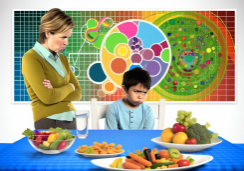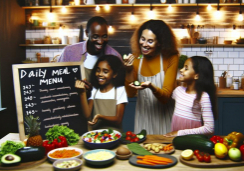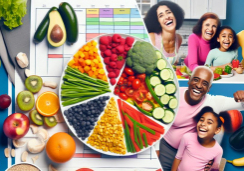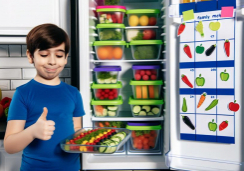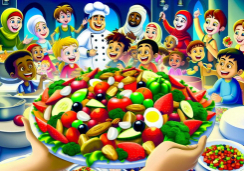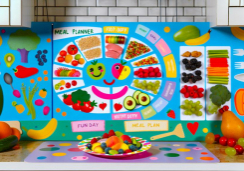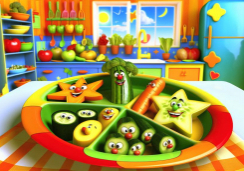New Gluten-Free Meal Plan: Weekly Home Cooking Guide
Navigating the world of gluten-free cooking can often feel like trying to find your way through a labyrinth without a map. You've told yourself that this week will be different, that you'll finally stick to a gluten-free diet without feeling lost or restricted. That's where the New Gluten-Free Meal Plan comes into play. It's not just a collection of recipes; it's a compass that guides you through each day with a well-thought-out strategy for every meal.
As you prepare to embark on this journey, you may be wondering how these dishes will taste and if the plan can truly cater to your hectic lifestyle. Rest assured, the guide is designed to not only simplify your cooking routine but also to introduce a variety of flavors that will ensure you don't miss the gluten-laden foods of your past.
But how exactly does this guide propose to transform your weekly meal prep into an effortless and enjoyable experience? Let's just say, the secret is in the planning—and a few clever tricks up our sleeve.
Understanding Gluten-Free Diets
When adopting a gluten-free diet, you need to steer clear of gluten, a protein found in wheat, barley, and rye, to maintain your health and well-being. Gluten-free diets are essential for those with celiac disease or gluten sensitivities, and they require a thorough understanding of which foods to include and avoid.
Rice, quinoa, and corn are naturally gluten-free grains that can serve as the foundation for your Gluten-free Meal Plan Week. It's also vital to read labels; hidden gluten in processed foods can derail your Meal Plan for the week.
Developing a varied meal plan ensures you don't miss out on essential nutrients. Lunch recipes might feature quinoa salads or rice-based dishes, while dinner could include hearty stews with gluten-free grains. Don't forget to include a healthy-ish dessert recipe to satisfy your sweet tooth without compromising your gluten-free regimen.
Essential Gluten-Free Ingredients
To successfully embark on a gluten-free lifestyle, you'll need to stock your pantry with staples such as almond, coconut, or rice flour, along with binders like xanthan or guar gum that are indispensable for gluten-free baking. These essential gluten-free ingredients serve as the foundation for countless recipes included in your gluten-free meal plan and weekly home cooking guide.
Grains and starches like quinoa, rice, and tapioca are also crucial. They can be used in everything from morning porridges to thickening sauces. For sweet treats, alternative sweeteners such as maple syrup, honey, or coconut sugar are excellent choices that keep your dishes free from gluten while adding a touch of natural sweetness.
Don't forget to include gluten-free pasta or noodles, which can be made from rice, quinoa, or chickpeas, for a quick and satisfying meal. When you're preparing your grocery list, ensure these ingredients listed are included to facilitate a variety of meal plans.
Whether you're using an Instant Pot for efficiency or following stovetop instructions, having a well-rounded selection of essential gluten-free ingredients will help you create nutritious meals easily. Keep a printable PDF of your gluten-free meal plan and grocery list handy for reference to streamline your weekly home cooking routine.
Day-by-Day Meal Breakdown
Dive into your gluten-free journey with a structured day-by-day meal plan that ensures you're getting a balanced intake of nutrients without feeling overwhelmed. As you embark on this culinary adventure, keep in mind that every meal is an opportunity to nourish your body and delight your taste buds.
- Monday:
- Breakfast: Begin with a smoothie bowl packed with fruits and gluten-free granola.
- Lunch: Savor a hearty Instant Pot quinoa and vegetable stew, perfect for leftovers.
- Dinner: Indulge in grilled fish with a side of roasted vegetables.
- Tuesday:
- Breakfast Recipes: Whip up some fluffy gluten-free pancakes topped with fresh berries.
- Lunch Recipes: Enjoy a vibrant salad with mixed greens, grilled chicken, and a citrus vinaigrette.
- Dessert Recipe: Treat yourself to a homemade gluten-free apple crisp.
- Wednesday:
- Grocery List: Midweek grocery shopping ensures fresh produce for the meals ahead.
- Meal Plans: Prepare a batch of gluten-free pasta with a tomato basil sauce for dinner.
- Serving Sizes: Be mindful of portion control to maintain energy levels throughout the day.
Adapting Recipes for Gluten Intolerance
Adjusting your favorite recipes to accommodate gluten intolerance can be straightforward with the right gluten-free substitutes for common ingredients like flour and breadcrumbs. When you're creating a gluten-free meal plan, consider adapting recipes by swapping out wheat flour for gluten-free alternatives, such as almond, coconut, or rice flour, which are great for baking and breading. Instead of traditional breadcrumbs, you can use crushed gluten-free cereal or rolled oats labeled as gluten-free.
For savory dishes, opt for gluten-free soy sauce, like tamari, to avoid the wheat found in regular soy sauce. When your meal plans include pasta, look for gluten-free pasta made from quinoa or rice. If you're thickening sauces or gravies, cornstarch or arrowroot powder can be excellent flour replacements.
Recipe conversion for gluten intolerance also means checking labels for hidden gluten in sauces and condiments. When using an Instant Pot or preparing an easy stovetop meal, these ingredient adjustments ensure your dish remains gluten-free. Even when using leftovers, maintain vigilance to keep your meal plan on track.
Transforming a brand new recipe or a tried-and-true favorite into a gluten-free version doesn't have to be daunting. With these tips, you'll navigate gluten-free cooking with confidence and ease.
What Makes a Gluten-Free Meal Plan Effective for Home Cooking?
A gluten-free meal plan offers numerous benefits, especially for home cooking. By focusing on glutenfree homecooked meals, individuals can enjoy a wide variety of nutritious and delicious dishes while avoiding potential health issues. This effective meal plan eliminates gluten-containing ingredients and substitutes them with gluten-free alternatives, ensuring a balanced and safe diet for those with gluten sensitivities or celiac disease.
Storing and Prepping for the Week
Before embarking on your gluten-free meal journey, ensure your pantry, fridge, and freezer are stocked with the essentials to simplify your weekly food preparation. Your kitchen is the heart of your home, and a well-organized space can make your meal plan flourish with ease and joy.
- Prepping ahead:
- *Chop and store*: Pre-chop vegetables, and you'll thank yourself during the week.
- *Marinating magic*: Proteins soaking in flavor not only enrich your meals but also save you prep time.
- *A place for everything*: Labeling shelves in your fridge for your meal ingredients can make each cooking session a breeze.
Having a grocery list tailored to your gluten-free recipes helps you shop efficiently, ensuring you have all you need for the upcoming weeks. Remember to:
- Select airtight containers that keep your prepped items and leftovers fresh.
- Strategize your space by organizing ingredients in a way that they're ready to serve when you need them.
- Embrace the freezer for meals that won't be eaten immediately, preserving their nutrients and your peace of mind.
Frequently Asked Questions
Can a Gluten-Free Diet Help in Weight Loss, and if So, How?
You might lose weight on a gluten-free diet by choosing whole foods that improve satiety and nutrient absorption, but simply cutting gluten without considering calorie count or processed alternatives won't guarantee weight loss.
Are There Any Potential Risks Associated With Switching to a Gluten-Free Diet for Someone Who Isn't Gluten Intolerant?
You might face nutrient deficiencies, struggle with dietary balance, and lower fiber intake. Beware of hidden gluten, misleading labels, and social challenges. Ensure food variety and watch for cost implications and unintended exposure to gluten.
How Can Eating Out at Restaurants Be Managed While Following a Strict Gluten-Free Meal Plan?
When eating out, clearly communicate your needs to the restaurant, choose places with gluten-free menus, and use dining cards to avoid cross-contamination. Look for gluten-free certifications and ask about menu ingredients.
What Are the Best Ways to Handle Cross-Contamination in a Household Where Not Everyone Is Following a Gluten-Free Diet?
You should implement strict cleaning protocols and use separate utensils, including personal toasters, to avoid cross-contamination. Store ingredients in gluten-free zones and consider color-coded kitchenware and dedicated appliances for a safe, nutrient-balanced environment.
Can You Recommend Any Gluten-Free Meal Planning Apps or Tools to Help Track and Plan My Meals?
You'll find gluten-free apps like Mealime and MyFitnessPal invaluable for meal prep, with features like shopping lists, recipe filters, ingredient checking, nutritional tracking, allergy alerts, and customizable plans, all backed by community support.
Conclusion
You've got this! Embracing a gluten-free lifestyle can be delicious and stress-free with your new weekly meal plan. Remember, key ingredients keep your pantry ready for any recipe. Plan ahead, adapt favorites for gluten sensitivity, and store meals smartly.
Your dedication to nutritious, balanced eating will pay off in flavor and health. Dive into those Greek Salmon Bowls and enjoy the journey to a happier, healthier you.
Keep cooking, keep thriving!

